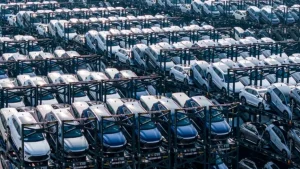Importing a used vehicle from China can be a cost-effective solution for many consumers and dealers worldwide. However, understanding the tax structure involved in the process is crucial to avoid unexpected expenses and ensure a smooth transaction. This guide provides a detailed overview of the taxes applicable when importing a used car from China, helping you make an informed decision.
Overview of Importing a Used Car in China
Why Consider to Buy Car in China?
Many international buyers are increasingly looking to buy car in China due to the competitive pricing and wide variety of vehicles available. The Chinese automotive market offers numerous options, from electric cars to luxury sedans, often at lower costs compared to other regions. However, importing a vehicle involves navigating complex tax regulations, which vary depending on the country of import.
The Role of Used Car Dealers
Used car dealers in China play a significant role in facilitating exports. They often provide assistance with documentation, compliance, and logistics. Working with reputable used car dealers can simplify the process, but it is essential to understand the tax implications independently to ensure full compliance with your country’s customs regulations.
Key Taxes When Importing Vehicles
Customs Duty
The customs duty is one of the primary taxes imposed when importing a vehicle. This tax is usually calculated as a percentage of the vehicle’s value, which includes the cost, insurance, and freight (CIF). The rate varies significantly between countries, so it is advisable to check with your local customs authority for specific details. For instance, the United States imposes a 2.5% duty on passenger vehicles, while the European Union may charge up to 10%.
Value Added Tax (VAT)
Value Added Tax (VAT) is another critical component of the import tax structure. VAT is applied to the total value of the vehicle, including customs duty. The rate varies by country; for example, in the UK, VAT is set at 20%, whereas in Australia, it is 10%. It is essential to factor in VAT when calculating the total cost of importing cars from China.
Excise Tax or Additional Fees
Depending on the country, additional taxes such as excise duty or environmental taxes may apply. These taxes are often based on factors like engine size, fuel type, or carbon emissions. For example, countries with strict environmental policies may impose higher taxes on vehicles with larger engines or higher emissions. Buyers should research these fees in advance to avoid surprises.
Calculating Total Tax Liability
Assessing the Vehicle’s Value
The first step in calculating your tax liability is determining the customs value of the vehicle. This value typically includes the purchase price, insurance costs, and freight charges. Accurate valuation is critical, as underdeclaring can lead to penalties, while overdeclaring may result in unnecessary expenses.
Combining Taxes and Fees
To estimate the total tax payable, combine the customs duty, VAT, and any additional fees. For example, if the customs value of a vehicle is $20,000, and the customs duty rate is 5%, the duty amount would be $1,000. If the VAT rate is 20%, it would be applied to the sum of the customs value and the duty ($21,000), resulting in a VAT of $4,200. The total tax liability would then be $5,200, excluding any additional fees.
Tips for Reducing Tax Liability
Research and Planning
Thorough research and planning are essential to minimize tax liability. Understanding the tax regulations in your country and exploring potential exemptions or reductions can lead to significant savings. For example, some countries offer lower taxes for electric or hybrid vehicles.
Working with Professionals
Engaging with experienced customs brokers or tax consultants can help navigate the complexities of importing a vehicle. These professionals can provide valuable insights into tax calculations, documentation, and compliance requirements, ensuring a hassle-free process.
Choosing the Right Vehicle
Selecting a vehicle that qualifies for lower tax rates can reduce overall costs. For instance, opting for a car with lower emissions or a smaller engine may result in lower excise taxes. Additionally, verifying the vehicle’s age and condition can help avoid unexpected fees.
Conclusion
Importing a used car from China can be a rewarding endeavor, but it requires a clear understanding of the tax implications. By familiarizing yourself with customs duties, VAT, and other fees, you can make informed decisions and avoid unnecessary expenses. Whether you are an individual buyer or a used car dealer, proper planning and professional assistance are key to a successful import experience.



